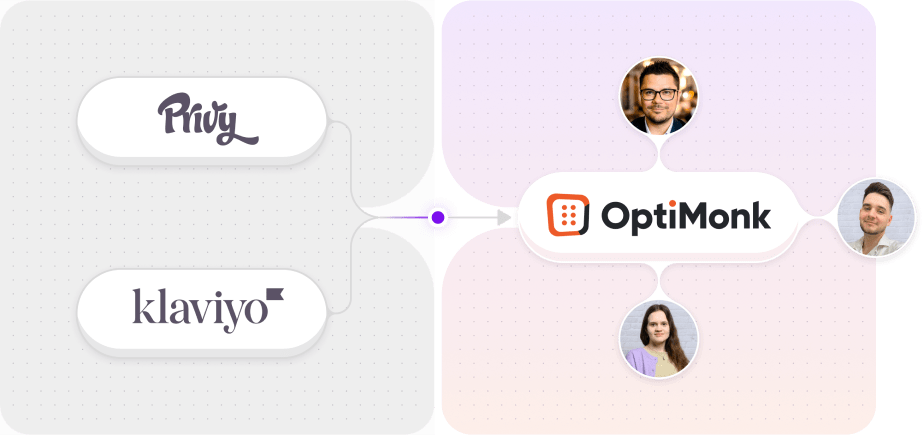- Blog
- 20 Blog Post Ideas for Increasing Sales in 2025
20 Blog Post Ideas for Increasing Sales in 2025
-
Nikolett Lorincz
- Marketing
- 6 min read
Table of Contents
Ever feel like you’ve tried every trick in the book to boost your ecommerce sales, only to see a small bump or, worse, no change at all?
The answer might lie in an underrated strategy: blogging.
Yes, it’s still relevant—and it could be your secret weapon for smashing your sales goals.
In this article, we’ll share 20 best blog post ideas to help you connect with your target audience, drive traffic, and increase sales. Plus, we’ll sprinkle in examples and tips to show you exactly how to bring these blog content ideas to life.
Let’s dive in!
Why blogging isn't dead
Despite what some might say, blogging remains a cornerstone of effective digital marketing.
Generating creative blogging ideas is one of the best ways to boost your SEO, tell your brand’s story, and engage your customers in a meaningful way.
According to statistics, businesses that blog get 67% more leads than those that don’t.
And it doesn’t stop there—blogging drives traffic, helps establish trust, and educates potential customers, which naturally leads to more sales.
So, whether you’re new to blogging or looking to revamp your content marketing strategy, this guide is for you.
20 blog ideas to increase sales
Now that we’ve established why blogging is a must-have for boosting sales, let’s get into the good stuff—fresh and exciting ideas.
These 20 blog post topics are designed to inspire, engage, and ultimately convert your readers into customers.
1. Product tutorials and how-to guides
Example: “How to Style Our Fall Collection for Every Occasion.”
When it comes to ecommerce, a great tutorial is like a free sample—it gives your audience a taste of what your product can do while showcasing its full potential.
Tutorials and how-to guides demonstrate how your product fits into your customers’ lives, solving problems and enhancing convenience.
For example, a clothing retailer might publish a guide on styling seasonal collections for various events, like work meetings, casual outings, or date nights. Pair this with high-quality visuals, step-by-step instructions, and even a video demo for maximum impact.
The goal is to show—not just tell—your audience how your product makes their lives easier, better, or more fun. Including helpful tips can further maximize the effectiveness of your tutorials.
2. Behind-the-scenes content
Example: “A Day in the Life of Our Product Designers.”
Customers love knowing there’s a human touch behind the brands they support. Sharing behind-the-scenes content gives them an exclusive look into your operations, whether it’s your creative process, factory tours, or team culture.
For instance, you could spotlight a day in the life of your design team as they sketch, prototype, and perfect a new product.
This type of content builds transparency, showing your audience that you value quality and creativity. It also fosters a deeper emotional connection, making your brand more memorable and trustworthy.
3. Customer stories and testimonials
Example: “How Sarah Increased Her Productivity with Our Tools.”
Storytelling is a powerful sales tool, and there’s no better storyteller than your satisfied customers.
Sharing real-life success stories brings authenticity to your marketing efforts. These testimonials show potential buyers that your product isn’t just a claim—it’s a solution that delivers results.
Start by interviewing happy customers and turning their experiences into compelling narratives. Use quotes, photos, or even video testimonials to make these stories feel personal and relatable. Your audience is more likely to trust the words of a fellow shopper than any sales pitch.
4. Seasonal gift guides
Example: “Top 10 Valentine’s Day Gifts for Him and Her.”
Gift guides are goldmines for sales because they target customers actively looking for suggestions. These blog posts position your products as thoughtful, relevant options for specific occasions like holidays, birthdays, or anniversaries.
Make your gift guides visually appealing by organizing products into categories (e.g., “For Him,” “For Her,” “Under $50”). Include clear descriptions, standout features, and direct links to purchase.
Bonus points if you incorporate a sense of urgency, such as “Order by February 10 to guarantee delivery by Valentine’s Day!”
5. Lists of best-sellers
Example: “Our 5 Most Loved Products This Month.”
A best-sellers list taps into the psychological principle of social proof—if everyone else loves these products, they must be good!
Highlighting your top-performing items in a blog post not only showcases your most popular offerings but also inspires confidence in new customers.
Make these blog posts fun and engaging by explaining why each product is a hit. Include customer reviews, high-quality images, and call-to-action buttons like “Shop Now.”
6. Product comparisons
Example: “Our Vacuum Cleaner vs. Competitor Brands: What Sets Us Apart.”
Comparison blog posts are great for addressing buyer hesitation. These posts provide a side-by-side analysis of your product versus alternatives, helping customers make informed decisions.
Focus on the unique benefits your product offers—features, price, durability, or customer service. Use tables, bullet points, or infographics to make the comparison clear and easy to digest.
This blog content builds trust by showing you’re confident enough to pit your product against the competition.
7. Industry trends
Example: “The Hottest Trends in Sustainable Fashion for 2025.”
Position your brand as a thought leader by sharing insights into industry trends. Customers want to align themselves with brands that stay ahead of the curve, and trend blog posts help you showcase your relevance and expertise.
For example, a sustainable fashion retailer might highlight emerging eco-friendly fabrics or innovative recycling practices. Include data, expert quotes, and links to your products that tie into these trends. Your audience will see you as a credible source for staying informed and stylish.
8. Expert tips and hacks
Example: “10 Hacks to Make Your Skincare Routine More Effective.”
Who doesn’t love a good hack? Sharing expert advice positions your brand as a helpful resource and provides immediate value to your audience.
Let’s say you sell skincare products. A blog post about skincare hacks could include tips like double-cleansing with your cleanser or using your serum as a primer. Sneak in subtle product recommendations to encourage readers to shop while they learn.
9. FAQ blogs
Example: “Everything You’ve Ever Wanted to Know About Our Subscription Plans.”
FAQ blog posts tackle common customer concerns head-on. They reduce friction in the buying process and save time for your customer service team.
Structure the blog post as a list of questions, starting with the most common ones. Be clear and concise in your answers, and link to relevant pages like product descriptions, shipping policies, or tutorials.
FAQ blogs are especially effective for complex products or services like subscriptions, tech gadgets, or custom items.
10. Success stories
Example: “How We Helped a Small Business Boost Sales by 200%.”
Case studies are essentially testimonials on steroids. They provide an in-depth look at how your product or service helped a customer achieve significant results.
Outline the challenge, the solution (your product), and the results. Use concrete numbers and data wherever possible to make the story compelling.
Pair the case study with visuals like graphs or before-and-after photos for added impact.
11. Influencer collaborations
Example: “Our Favorite Recipes with Chef Alex Using Our Ingredients.”
Influencers are modern-day trendsetters, and their recommendations carry significant weight. Collaborating with influencers on blog content can instantly boost your brand’s credibility and introduce your products to a wider, engaged audience.
For example, a kitchenware brand might team up with a popular chef to create recipes using their products. The blog post could feature step-by-step instructions, gorgeous images of the finished dishes, and links to purchase the tools used.
By associating your brand with a trusted personality, you create an authentic connection that resonates with potential customers.
12. Content around product launches
Example: “Introducing Our Revolutionary New Tech Gadget.”
A new product launch is the perfect opportunity to build hype and excitement. A blog post can act as a launchpad, offering an exclusive first look at what’s coming.
Describe the product’s standout features and how it solves a problem or fulfills a need. Include teaser images or videos, pre-order options, and a countdown to the release date.
Pair the blog post with a strong call to action like, “Be the first to own it—sign up now!”
13. Lifestyle content
Example: “How to Build a Minimalist Wardrobe with Our Basics.”
Lifestyle blog ideas help your audience envision how your products fit seamlessly into their daily lives or ideal aspirations. Instead of focusing solely on the product, these lifestyle blog posts emphasize the experience or transformation it offers.
For instance, a clothing brand targeting minimalists could provide wardrobe tips using their collection. High-quality photos and relatable scenarios—like packing for a weekend getaway—enhance the narrative.
Lifestyle blog taps into aspirations, helping customers see your brand as part of the life they want to lead.
14. Data-driven insights
Example: “What Our Sales Data Tells Us About Customer Preferences.”
Sharing insights from your data not only makes your brand look informed but also helps customers make smarter buying decisions. For example, you could reveal trends like the most popular product categories, regional preferences, or seasonal buying behaviors.
A beauty brand might highlight how sales data shows a spike in moisturizing products during winter, using this information to recommend relevant items. Include charts, graphs, or infographics to make the data visually engaging.
This transparency builds trust and positions your brand as an industry expert.
15. Sustainability and ethical practices
Example: “How We’re Reducing Our Carbon Footprint in 2025.”
Sustainability is a must-have for many consumers. Highlighting your efforts to reduce waste, source ethical materials, or support fair labor practices appeals to socially conscious shoppers.
For example, a home goods brand might write a blog post about switching to biodegradable packaging or partnering with eco-friendly suppliers. Add behind-the-scenes photos or interviews with team members involved in sustainability projects.
When customers see your commitment to making a difference, they’ll feel good about supporting your brand.
16. Tips for maximizing value
Example: “5 Ways to Get the Most Out of Your Fitness Tracker.”
Many customers want reassurance that they’re getting the best bang for their buck. Blog posts that offer tips and tricks for maximizing product use showcase the versatility and longevity of what you sell.
For example, a fitness brand could write about advanced features of their trackers, such as sleep tracking or integration with popular fitness apps.
By teaching customers how to use these features, you reinforce their decision to buy while building brand loyalty.
17. Promotions and sales announcements
Example: “Get Ready for Our Biggest Black Friday Sale Yet!”
When it comes to sales, timing is everything. Blog posts announcing promotions or limited-time offers are an excellent way to create urgency and drive traffic to your store.
Be sure to include all the details: start and end dates, exclusive discounts, and a sneak peek of what’s on sale. Use bold, action-oriented language like “Don’t Miss Out!” or “Shop Before It’s Gone!”
Pair this with countdown timers or early-bird deals to heighten anticipation and conversions.
18. Educational content
Example: “What Makes Organic Skincare Products Better for Your Skin?”
Educational blog content addresses common questions or concerns your audience might have, positioning your brand as a trusted source of knowledge. These blog posts nurture potential customers, making them more likely to choose your products when they’re ready to buy.
Consider incorporating leadership blog post ideas to establish thought leadership and showcase your expertise.
For example, a skincare brand could explain the benefits of organic ingredients, linking the science back to their product line. Break down complex topics into simple, digestible explanations to keep readers engaged. Add in a call-to-action like, “Explore our organic skincare collection today!” to encourage conversions.
19. User-generated content spotlights
Example: “Our Favorite Customer Photos of the Month.”
User-generated content (UGC) is a treasure trove for building community and trust. Spotlighting your customers’ photos, reviews, or stories not only celebrates them but also provides authentic endorsements for your products.
For example, a home decor brand might showcase customer photos of rooms styled with their furniture. Include a short blurb about each customer’s experience and links to the featured products.
This not only validates your brand but also encourages other customers to share their content for a chance to be featured.
20. Predictions for the future
Example: “Top Predictions for Ecommerce in 2026 and How We’re Preparing.”
Forward-looking blog ideas demonstrate innovation and thought leadership. Sharing predictions about your industry helps customers see your brand as a trailblazer and builds excitement for what’s ahead.
For instance, a tech company might forecast trends like AI-driven personalization in ecommerce and how they’re integrating these advancements. Include actionable insights or examples of how your brand is preparing to stay ahead of the curve.
Customers will trust your expertise and be eager to see what you’ll do next.
How to make these ideas work for your ecommerce store
Having a list of blog ideas is great, but making them work for your ecommerce store requires a strategic approach. Here’s how to turn these concepts into engaging, sales-driving content:
1. Customize content to your brand and audience
Not every blog post idea will suit every business, and that’s okay. The key is to tailor each idea to your unique brand voice, target audience, and product offerings.
For example:
- A beauty brand could focus on tutorials for achieving specific looks using their makeup line.
- A sustainable fashion brand might lean into trend blogs and sustainability content.
- A tech company could prioritize data-driven insights and product comparisons.
By aligning your content ideas with your brand values and customer interests, you’ll create blog posts that resonate and feel authentic.
2. Create a content calendar
Consistency is crucial for building an engaged audience. A content calendar helps you stay organized and ensures a steady stream of fresh material.
Map out blog topics for the next quarter or year, aligning posts with product launches, promotions, or seasonal trends.
Set a publishing schedule you can maintain, whether it’s weekly, bi-weekly, or monthly.
Consistency not only keeps your audience coming back but also signals to search engines that your website is active—boosting your SEO.
3. Use analytics to optimize performance
The best content strategies are data-driven.
Once you start publishing blogs, use tools like Google Analytics or your ecommerce platform’s analytics dashboard to track key metrics, such as:
- Page views: Which blogs are attracting the most traffic?
- Engagement: Are readers staying on the page, clicking links, or leaving comments?
- Conversions: Which posts are leading to sales or sign-ups?
Identify patterns to see what works and what doesn’t. Double down on successful topics and formats, and refine or retire underperforming ones.
4. Test and refine your approach
Blogging isn’t a one-size-fits-all strategy, so it’s important to experiment and adapt over time.
Try testing elements like:
- Headlines: Run A/B tests to see which headlines get the most clicks.
- Formats: Experiment with listicles, tutorials, and long-form content to see what resonates best.
- Calls-to-action: Play with placement, wording, and design to optimize for conversions.
Continuous improvement ensures your content stays fresh, relevant, and effective at driving sales.
5. Promote your content
Don’t stop at hitting “publish.” Amplify your blogs through:
- Email marketing: Include blog links in newsletters or promotional emails.
- Social media: Share snippets or highlights on platforms where your audience hangs out.
- SEO: Optimize your posts with keywords, meta descriptions, and internal links to boost organic traffic.
The more people who see your content, the greater the potential impact on your sales.
Wrapping up
Blogging is far from dead—it’s alive, thriving, and ready to help you grow your sales.
By using these 20 new blog ideas, you can create engaging content that builds trust, drives traffic, and converts readers into loyal customers.
Now it’s your turn. Start brainstorming, create a content calendar, and watch as your ecommerce sales climb higher than ever!
Migration has never been easier
We made switching a no-brainer with our free, white-glove onboarding service so you can get started in the blink of an eye.

What should you do next?
Thanks for reading till the end. Here are 4 ways we can help you grow your business:
Boost conversions with proven use cases
Explore our Use Case Library, filled with actionable personalization examples and step-by-step guides to unlock your website's full potential. Check out Use Case Library
Create a free OptiMonk account
Create a free OptiMonk account and easily get started with popups and conversion rate optimization. Get OptiMonk free
Get advice from a CRO expert
Schedule a personalized discovery call with one of our experts to explore how OptiMonk can help you grow your business. Book a demo
Join our weekly newsletter
Real CRO insights & marketing tips. No fluff. Straight to your inbox. Subscribe now
Nikolett Lorincz
- Posted in
- Marketing
Partner with us
- © OptiMonk. All rights reserved!
- Terms of Use
- Privacy Policy
- Cookie Policy
Product updates: January Release 2025








